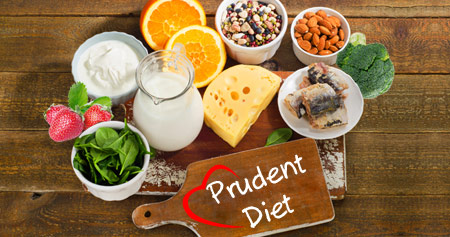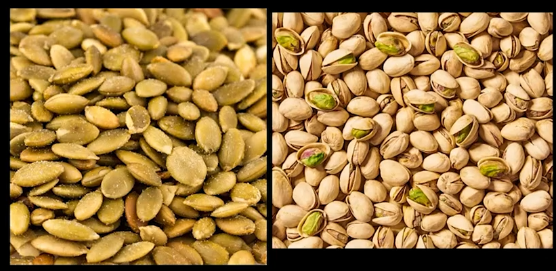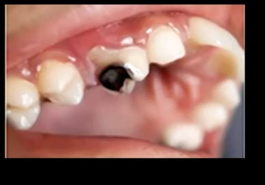Nutrition - Macronutrients And Micronutrients
May 18, 2023
Navigate Quickly
Nutrients
Energy provided in the food
Energy-providing food products:
Classification of Food
Balanced diet
Prudent Diet
Staple diet
Proteins
Essential amino acids
Non-Essential Amino Acids
Conditionally essential amino acids
Semi-essential amino acids
Supplementary action of proteins
Sources
Proteins (quantity of protein)
Quality Of Protein
EGG
Fats
Source of Fats
Carbohydrates
Glycemic Index
Fibre
Micronutrients - minerals
Minerals
Iron
Diagnosis of Anemia
Evaluation
Iodine
Deficiency of iodine
Indicators of Iodine Deficiency
Fluorine
Zinc
Copper
Nutritional Deficiencies
Frequently Asked Questions

Nutrients
Food's components, known as nutrients, fuel biological activity and are vital to human health. These substances, which are grouped as proteins, lipids, carbohydrates (sugars, dietary fiber), vitamins, and minerals, carry out the essential functions in the body. These nutrients can be divided into:
Energy provided in the food
- Macronutrients: Proximate Principles form the main bulk of the food. Proteins: they provide 10-15% of the total energy intake. Fats provide 15-30% of the total energy intake. Carbohydrates: they provide 50-80% of the total energy intake
- Micronutrients: Required in small amounts, from a fraction of milligrams to several grams. They are further divided into vitamins and minerals. Micronutrients consist of vitamins and minerals. Major minerals: Sodium, Potassium, Calcium, Phosphorus, Magnesium, Trace elements, Iron, Iodine, Zinc.
- Carbohydrates: They provide 4 kcal/gram of carbohydrates.
- Proteins: They provide 4 kcal/gram of proteins
- Fats: They provide 9 kcal/gram of fats.
- Fibre: They provide 2 kcal/gram of Fibre
- Alcohol: They provide 7 kcal/gram of Alcohol
Read this blog further to get a quick overview of this important topic for PEDIATRICS and ace your NEET PG exam preparation.

Energy-providing food products:
- Carbohydrates: They provide 4 kcal/gram of carbohydrates.
- Proteins: They provide 4 kcal/gram of proteins.
- Fats: They provide 9 kcal/gram of fats.
- Fibre: They provide 2 kcal/gram of Fibre.
- Alcohol: They provide 7 kcal/gram of Alcohol.
Classification of Food
- By origin
- By chemical composition
- By predominant function:- Body-building foods: poultry, eggs, meat, pulses, nuts, oil seeds. Energy-giving foods: cereals, sugar, roots and tubers, fats and oil
- Protective foods: vegetables, fruits, milk
- Classify by nutritive value: Cereals & millets, Pulses, Vegetables
Balanced diet
A diet that contains all nutrients both macro and micronutrients in required quantities to prevent any excess or deficiency. It contains Protein - 10-15%,Fats - 15-30% and Carbohydrates - 50-80%
| Food item | Man (sedentary) | Female (sedentary) |
| Cereals | 460 gm/day | 410 gm/day |
| Pulses | 40 gm | 40 gm |
| Leafy vegetables | 40 gm | 100 gm |
| Other vegetables | 60 gm | 40 gm |
| Roots and tubers | 50 ml | 50 gm |
| Milk | 150 ml | 100 gm |
| Oil & fat | 40 gm | 20 gm |
| Sugar & jaggery | 30 gm | 20 gm |
Prudent Diet

A temporary diet that adheres to dietary goals, i.e, fat and cholesterol-controlled diet. It helps us to prevent cardiovascular diseases. Principle preventive strategy in coronary heart disease recommended by WHO It's the right mixture of all the nutrients which protect particularly from heart disease. Reduction of fat intake to < 20-30% of total energy intake. Consumption of saturated fats < 7% of total energy intake Reduction in dietary cholesterol < 200 mg/day. Increase in complex carbohydrate consumption. Reduction of salt intake to <5 gm per day (in India average < 15 gm/day). Avoidance of alcohol consumption .Cholesterol: HDL Ratio < 3.5
Staple diet
Diet consumed by the majority of the population and culturally acceptable. Rice, corn (maize), and wheat make up two-thirds of this. Other food staples include millet and sorghum; tubers such as potatoes, cassava, yams, and taro; and animal products such as meat, fish, and dairy. Food staples traditionally depend on what plants are native to a region.
Proteins
Complex organic nitrogenous compounds Proteins differ from carbohydrates and fats in that they contain nitrogen which amounts to 16%. Proteins constitute about 20% of total body weight in an adult. They provide us with 10-15% intake .And per gram of proteins provides us 4 kcal/gm of protein.
Essential amino acids
Proteins are made up of essential amino acids. Essential Amino Acids Cannot be synthesized in the body in the required amount, so must be obtained from the diet (that is why it is essential)
- Nine essential amino acids: Mnemonic - PVTTIMHLL
- Leucine -L
- Isoleucine - I
- Lysine - L
- Methionine -M
- Phenylalanine -P
- Threonine -T
- Valine -V
- Tryptophan - T
- Histidine -H
Non-Essential Amino Acids
Non-essential amino acids: Synthesized in the body. There are six non-essential amino acid
- Arginine
- Asparaginic acid
- Serine
- Glutamic acid
- Proline
- Glycine
Conditionally essential amino acids
Conditionally Essential Amino Acids: Non-essential amino acids may turn essential if their precursors are limited in the body. Tyrosine (derived from phenylalanine) and cysteine (derived from methionine) are CEAA
Other CEAA Include: Arginine, Glutamine, Taurine, Glycine
Semi-essential amino acids
Semi-essential amino acids - requirements increase during vulnerable periods like Pregnancy and Adolescent
Semi-essential amino acids includes Arginine and Histidine.
Supplementary action of proteins
Lysine is the most deficient amino acid In India, the most common staple is rice and pulses together, because they both supplement each other.
| Food item | Limiting amino acid |
| Cereals - TL | Threonine & lysine |
| Pulses - MC | Methionine & Cystine |
| Maize - TL | Tryptophan & lysine |
Sources
Animal sources: milk, meat, eggs, cheese, fish. Biologically complete proteins (animal source) contain all essential amino acids in adequate amounts. Egg proteins reference proteins. Vegetable sources: Pulses, cereals, nuts. Poor inessential amino acids. India: cereals and pulses main sources of dietary protein cheap, easily available, and consumed in bulk. In India, the main source of food is vegetables as they are cheap, easily available, and consumed in bulk.
Proteins (quantity of protein)
Quantity Of Protein: Protein-energy ratio = (energy from protein in food product/total energy from food product) x 100 .PER > 2.5 assigned to proteins that are efficient in promoting growth (animal protein) PER-0.5-2.5 assigned to proteins that are efficient in supporting life but not growth (vegetable protein) Maximum Protein energy ratio is present in Fish. Protein Efficiency Ratio = weight gain(g)/Unit of protein intake(g) x 100. It is a Laboratory indicator
Quality Of Protein
Quality Of Protein is calculated by DIAAS: Digestible Indispensable Amino Acid Score. It Represents ideal digestibility coefficient of a food product. DIASS% = (Digestible dietary indispensable amino acid mg in 1g of dietary protein/Same dietary indispensable amino acid mg in 1g of reference protein) X 100. Reference protein is egg because it has maximum net protein utilization and contains all the essential amino acids. Currently accepted best to measure protein quality is. Digestibility coefficient it is calculated by Amount of amino acid absorbed from food/ amount of protein ingested. It is an indicator of the external protein quality of the food product.
Biological Value- Amount of nitrogen retained for body mass/amount of amino acid absorbed from food. It is an indicator of the internal quality of protein. It is calculated by Nitrogen retained / amino acid
Net Protein Utilization-NPU Digestibility coefficient x Biological value/100 Or NPU Nitrogen retained/Protein ingested x 100. In calculating protein quality, 1 gm of protein is equivalent to 6.25gm nitrogen (MCQ)
EGG
It is Called a reference protein (contains all essential amino acids): NPU is maximum. - 96-100 It provides us with 60-70 kcal,6-gram fat,6 grams of protein. Consists of 30 Mg Calcium , 1.5 Mg Iron, 70 Kcal Energy, 250 Mg Cholesterol, Amino acid score: the amount of amino acid in a food product/amount of same amino acid in reference protein egg.
Fats
Fats - 15-30%. It is Rich source of energy. It Includes simple lipids (triglycerides), compound lipids (phospholipids), derived lipids(cholesterol). The fats may further be classified as saturated or unsaturated fats
Saturated fats (not good for health)-Lauric acid, palmitic acid, stearic acid
Unsaturated fatty acids - Primarily vegetable source of fat Monounsaturated (oleic acid).Polyunsaturated fatty acid omega 3 and omega 6(linoleic acid, linolenic acid)
| Alpha-Linolenic acid - Omega 3 | Linoleic acid - Omega 6 |
| EPA | Arachidonic acid |
| Fish | EGG |
| Flax seed | Safflower oil |
Most essential fatty acid - linoleic acid. Saturated fatty acids mostly in animal fats exception coconut oil and palm oil. Polyunsaturated fatty acids source is vegetable oils exception fish oil.
Source of Fats
Linoleic acid, Arachidonic acid Safflower oil Linolenic acid Flaxseed oil, soybean oil Eicosa pentatonic acid Fish oil
Visible Fats vs Invisible Fats
Visible fats separated from natural sources e.g. Ghee from milk whereas Invisible fats are not visible to the naked eye and are present in almost every article of food e.g. cereals, pulses.
Partially hydrogenated vegetable oils
- Vegetable oils are hydrogenated under conditions of optimum temperature and pressure In the presence of catalyst liquid oils are converted into semi solids and solid fats.
- e.g. Vanaspati ghee
- Use quality maintained in hot humid climate, easy storage.
- Fortified with Vitamin A 2500 IU/100 GM
- Vitamin D-175 IU/100 GM
- It is known as Phrynoderma.
- It's toad-like skin.
Carbohydrates
It makes up 50-70% of the total diet. It provides 4 kcal/gram. Carbohydrates are essential for oxidation of fats and synthesis of certain non essential amino acids. Important sources of carbohydrate:
- Starch= roots, tubers, cereals
- Sugars comprise:
- Monosaccharides: glucose, fructose, galactose
- Disaccharides: sucrose, lactose, maltose
- Cellulose: indigestible component of carbohydrates which contributes to dietary fibers
- Carbohydrate reserve (glycogen) of a human adult is 500 gm.
Glycemic Index
After you eat any food, glucose concentration rises. Some foods make it rise fast or slow. So, every food has their glycemic index (GI). Gl of a food is defined as area under two-hour blood glucose response curve (AUC) following ingestion of a fixed proportion of test carbohydrate (usually 50gm) as a proportion (% of the standard either glucose or white bread) Rate of change of blood glucose per unit of food consumed. We should have low glycemic index foods.
| Classification | GI Index range | Examples |
|---|---|---|
| Low GI | 55 or less | most fruits and vegetables (except potatoes, watermelon, sweet com), whole grains, pasta foods, beans, lentils, oats, quinoa, guava |
| Medium GI | 56-69 | Sucrose, basmati rice, brown rice, dairy products |
| High Gl | 70 and above | corn flakes, baked potato, some white rice varieties (e.g jasmine), white bread, candy bar, syrupy foods |
Fibre
We require 2kcal/g of fibre. It Should be the major bulk of the diet Shorten the transit time of the food and increases the bulk of the food. It Reduces postprandial blood sugars, LDL, Cholesterol. It Reduces the chance of CAD, diverticulitis, irritable bowel syndrome and colon cancer . in Indian diet provides 50-100 gas of fiber per day. Daily intake of 40 gms of fibre is desirable
Pediatrics Related Articles:
Micronutrients - minerals
Micronutrient: Classification
- Iron
- Iodine
- Fluorine
- Zinc
- Copper
- Chromium
- Selenium
- Molybdenum
- Antioxidants
Minerals
Major Minerals are Calcium, Phosphorous, Sodium, Potassium, Magnesium. Trace Elements: Required in Quantities Less Than A Few Milligrams /Day Eg Iron, Iodine, Fluorine, Zinc, Copper, Cobalt, Chromium, Manganese, Molybdenum, Selenium, Silicon, Nickel, Tin. Trace Contaminants with No Known Function: Lead, Mercury, Barium, Boron, Aluminum
Iron
Human body contains 3-4 gm iron .60-70 percent in blood in the form of hemoglobin (Hb) iron circulating form.1-1.5 gm is storage iron, Haeme source is obtained from animals (meat, liver, poultry, and fish). Its Bioavailability 15-30%. Non-haeme sources are Obtained from Green leafy vegetables (spinach, mint, coriander, cereals, jaggery, dried fruits).Bioavailability is poor due to the presence of phytates, oxalates, carbonates, phosphates, and dietary fibers, which interfere with iron absorption. things that interfere with iron absorption are Phytates, oxalates, carbonates, phosphates, milk, eggs, tea, and dietary fibers like Milk, eggs, tea interfere with iron absorption. Phosphates in egg yolk, tannin in tea, oxalates in vegetables interfere with iron absorption . Promoters of iron absorption are ascorbic acid and vitamin C-rich foods Eg. Amla, guava, citrus fruits etc. One should never have an iron with egg, tea, and milk. Human milk has less iron content <0.2 mg/dl. The bioavailability is 60-70 percent Therefore, a child who is 0-6 months should not be put on additional iron supplements. The richest source of iron is jaggery and Dried pumpkin and pistachio seed contains a lot of iron.

Diagnosis of Anemia
- Cut off for anemia
- Adult male - 13 gm/dl (minimum Hb content)
- Adult females (non-pregnant) - 12 gm/dl (minimum Hb content)
- Adult females (pregnant) - 11 gm/dl (minimum Hb content)
- Children, 6 months to 6 years - 11 gm/dl (minimum Hb content)
- Children, 6 months to 14 years - 12 gm/dl (minimum Hb content)
- Early anemia: Hb level 10-11 gm/dl
- Marked anemia: Hb level < 10 gm/dl
Evaluation
- Hemoglobin concentration:
- Epidemiological indicator
- Used for Epidemiological survey of anemia
- It is an Insensitive index of nutrient depletion
- Epidemiological indicator
- Serum iron concentration:
- A better index of nutrient depletion
- Normal range: 0.8-1.8mg/l
- Values< 0.5mg/l indicate iron deficiency
- Preferred for index of nutrient depletion
- Serum Ferritin
- Most sensitive tool for evaluating iron status
- Most useful Indicator of iron status in a population where the prevalence of iron deficiency is not high
Values <10mcg/L: absence of stored iron Serum transferrin saturation: >16%, normal value is 30%
Iodine
It is Required for synthesis of thyroid hormones and Needed for growth and development of body.
Richest source of iodine is Seaweeds,Cod liver oil,Milk, meat, vegetables, onions, potatoes. Other sources include Potatoes, Onions, Cranberries About 90% of iodine comes from food eaten, and the rest from drinking water (about 1-50 micrograms/L).Goitrogens Lead to the development of goitre by interfering with iodine utilization by thyroid glans. The Brassica group of vegetables contains goitrogens Eg. - cabbage, cauliflower
Deficiency of iodine
Disease-associated with iodine deficiency are
- Goitre
- Hypothyroidism
- Subnormal intelligence
- Delayed motor milestones
- Mental deficiency
- Hearing defects
- Speech defects
- Strabismus
- Nystagmus
- Endemic cretinism
- IUD (intrauterine death)
Indicators of Iodine Deficiency
Urinary iodine excretion- it is the Most important surveillance or epidemiological indicators it is Preferred for surveillance
Neonatal hypothyroidism - It is Sensitive indicator of environmental iodine deficiency. It is Preferred for environmental iodine deficiency checks. Goiter prevalence is checked, Cretinism prevalence is checked ,T3/T4/TSh Level-Serum T4 level is a more sensitive indicator of thyroid insufficiency than T3 level.
Fluorine
It is the Most abundant element in nature. Source is Drinking water containing 0.5-0.8 mg/L, Food such as Sea fish, Cheese and Tea. It is also known as Double-Edged Sword. Deficiency leads to dental caries whereas Excess leads to Fluorosis.

mottling of the teeth
- Indicates dental fluorosis
- Happens when the fluoride content in water is more than 1.5 mg/l of drinking water.

Dental caries
Here there is a Deficiency of fluorine in the water
Zinc
It is an Immunomodulator required for synthesis of insulin by the pancreas .It is an Antioxidant. Its deficiency leads to Growth failure, Sexual infantilism in adolescents, Loss of taste, Delayed wound healing. Maternal zinc deficiency leads to Spontaneous abortion and Congenital malformations like anencephaly. Milk, meat, and fish are sources for zinc.
Copper
Hypocupremia leads to Neutropenia. Loss of copper leads to Wilson's disease. PEM, Infants fed for long periods on cows milk (can suffer from copper deficiency)
Hypercupremia leads to Leukemia, Hodgkin's disease, Severe anemia, Hemochromatosis, MI and Hyperthyroid
Chromium- helps in Carbohydrate metabolism. Its deficiency can lead to Insulin disturbances, diabetes mellitus
Selenium-Deficiency in PEM. Selenium administration to children with kwashiorkor led to weight increase
Molybdenum -Deficiency can cause Mouth and esophageal cancers and Excess absorption can lead to bony deformities
Nutritional Deficiencies
Nutritional deficiencies-
- Subacute combined degeneration of the spinal cord due to Vitamin B12 deficiency
- Acrodermatitis Enteropathica due to Zinc deficiency
- Seizures in infants due to Vitamin B6 deficiency
- Neural tube defect due to Vitamin B9(FOLIC ACID)
- Vitamin B1 deficiency causes Beri beri
- Wernicke's Korsakoff Psychosis due to thiamine deficiency
- Chromium deficiency causes impaired glucose tolerance
- Riboflavin deficiency causes Vitamin B2
- Cheilosis
- Angular stomatitis
- Atrophic glossitis
Frequently Asked Questions
Q: Which micronutrient element is known as a double-edged sword?
Answer: Fluorine
Q: Which vitamin causes subacute combined degeneration of the spinal cord?
Answer: Vitamin B12 deficiency
Q: Acrodermatitis Enteropathica is caused by a deficiency of which micronutrient?
Answer: Zinc
Q: What clinical feature is seen in infants due to the Deficiency of Vitamin B6?
Answer: Seizures
Q: Neural tube defect due to the Deficiency of which vitamin?
Answer: Vitamin B9(FOLIC ACID)
This is everything that you need to know about macronutrients and micronutrients for your PEDIATRICS PREPARATION. For more interesting and informative blog posts like this download the PrepLadder App and keep reading our blog!


PrepLadder Medical
Get access to all the essential resources required to ace your medical exam Preparation. Stay updated with the latest news and developments in the medical exam, improve your Medical Exam preparation, and turn your dreams into a reality!
PrepLadder Version X for NEET PG
Avail 24-Hr Free Trial